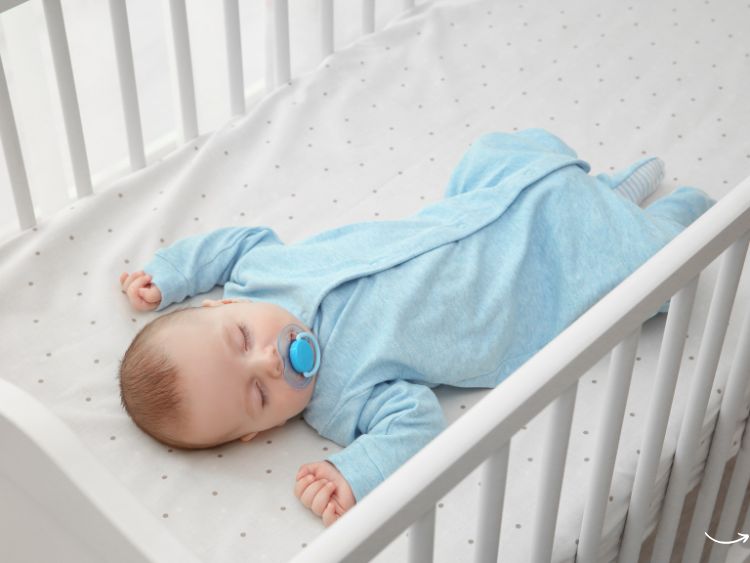Parenting is a journey filled with joy, surprises, and challenges. One common challenge for new parents is ensuring their baby gets a good night’s sleep. Many parents turn to various methods and tools to help their little ones rest better, and one such tool that has gained popularity is the use of red light for baby sleep. But what exactly is “red light baby sleep,” and how can it benefit your baby?
In this article, we’ll delve into the science behind red light and its effects on sleep, particularly for babies. We’ll explore the benefits, how to use red light effectively, and answer some frequently asked questions. By the end, you’ll have a comprehensive understanding of how red light can be a game-changer in your baby’s sleep routine.
What is Red Light Baby Sleep?
The Science Behind Red Light
Red light therapy involves the use of red wavelength light, typically in the range of 630-670 nanometers, to promote various health benefits. Unlike blue light, which can interfere with sleep patterns by inhibiting melatonin production, red light has been found to support the natural sleep cycle. Melatonin is a hormone responsible for regulating sleep, and its production increases in the absence of blue light, which is prevalent during daylight hours.
Why Red Light for Babies?
Babies, like adults, have circadian rhythms that regulate their sleep-wake cycles. However, these rhythms are still developing, making infants more susceptible to disturbances. Red light can help stabilize these cycles by promoting melatonin production, thus creating a conducive environment for sleep.
Benefits of Red Light for Baby Sleep
Promotes Melatonin Production
As mentioned earlier, red light supports the production of melatonin, which is crucial for sleep. For babies who struggle with sleep patterns, this can be particularly beneficial. By reducing the presence of blue light and incorporating red light into the sleep environment, parents can help their babies fall asleep faster and stay asleep longer.
Soothing and Calming Effect
Red light has a naturally soothing and calming effect, which can help reduce anxiety and restlessness in babies. This calming effect is especially useful during nighttime feedings or diaper changes, where bright lights can be disruptive.
Safe and Non-Invasive
Unlike some sleep aids and medications, red light is a safe, non-invasive method to improve sleep. It doesn’t involve any chemicals or physical contact, making it a gentle option for babies.
How to Use Red Light for Baby Sleep
Choosing the Right Red Light Device
When selecting a red light device for your baby, opt for one that emits light in the 630-670 nanometer range. Many night lights and sleep aids are designed specifically for this purpose. Ensure the device is safe, with no sharp edges or small parts that could pose a hazard.
Setting Up the Sleep Environment
To maximize the benefits of red light, incorporate it into your baby’s nighttime routine. Place the red light in the nursery, ensuring it’s not too bright or too close to the baby’s crib. A soft, ambient glow is ideal. You can also use red light during nighttime feedings or diaper changes to maintain a soothing environment.
Consistency is Key
Like any sleep aid, consistency is crucial. Use the red light consistently at bedtime and during nighttime awakenings to help your baby associate it with sleep. Over time, this consistency will help reinforce healthy sleep patterns.
FAQs About Red Light Baby Sleep
Is Red Light Safe for Babies?
Yes, red light is generally safe for babies when used appropriately. It’s essential to choose a device specifically designed for babies and to follow the manufacturer’s instructions regarding placement and duration of use.
How Soon Can I Expect to See Results?
Results can vary, but many parents notice improvements in their baby’s sleep within a few nights to a couple of weeks. Consistency is crucial, so stick with the routine to give it time to work.
Can Red Light Replace Other Sleep Aids?
Red light can complement other sleep aids and strategies, but it shouldn’t be the sole method relied upon. Establishing a consistent bedtime routine, creating a comfortable sleep environment, and ensuring your baby is well-fed and comfortable are all important factors in promoting good sleep.
What If My Baby Doesn’t Respond to Red Light?
Every baby is different, and some may not respond to red light as effectively as others. If you don’t see improvement after a few weeks, consider consulting a pediatrician or sleep specialist for additional guidance.
Can I Use Red Light During the Day?
Red light is most effective at night when it can support the natural increase in melatonin production. However, if your baby takes daytime naps in a darkened room, using red light can still be beneficial.
Summary
Red light baby sleep is a promising and gentle method to help improve your baby’s sleep patterns. By promoting melatonin production and creating a soothing environment, red light can make a significant difference in how well your baby sleeps. Remember to choose the right device, set up the sleep environment correctly, and maintain consistency in your routine. While red light may not be a one-size-fits-all solution, it can be a valuable addition to your sleep toolkit.
Authoritative Links
For further reading and authoritative information on red light therapy and baby sleep, consider the following resources:
- https://www.sleepfoundation.org
- https://www.healthline.com
- https://www.ncbi.nlm.nih.gov
- https://www.mayoclinic.org
- https://www.webmd.com
By incorporating red light into your baby’s sleep routine, you may find that both you and your little one enjoy more restful nights and happier days. Sweet dreams!



